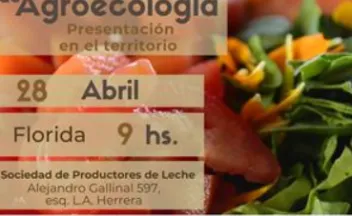Aportes científicos y tecnológicos del Instituto Nacional de Investigación Agropecuaria (INIA) del Uruguay a las trayectorias agroecológicas.

Introducción general. ¿De qué hablamos cuando decimos agroecología y trayectorias agroecológicas?. José María Paruelo, Roberto Zoppolo y Georgina Paula García-Inza. -- Primera sección. Transitando hacia la protección agroecológica de los cultivos. Editora:Carolina Leoni. -- Introducción. Transitando hacia la protección agroecológica de los cultivos. Carolina Leoni. -- Capítulo 1. Hacia un manejo agroecológico de las chinches en soja. María Stella Zerbino y Carolina Leoni. -- Capítulo 2. Manejo de plagas en frutales de hoja caduca:hacia un norte agroecológico.

